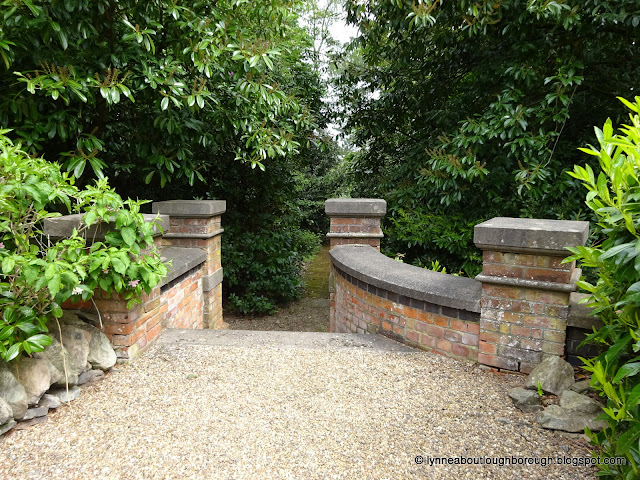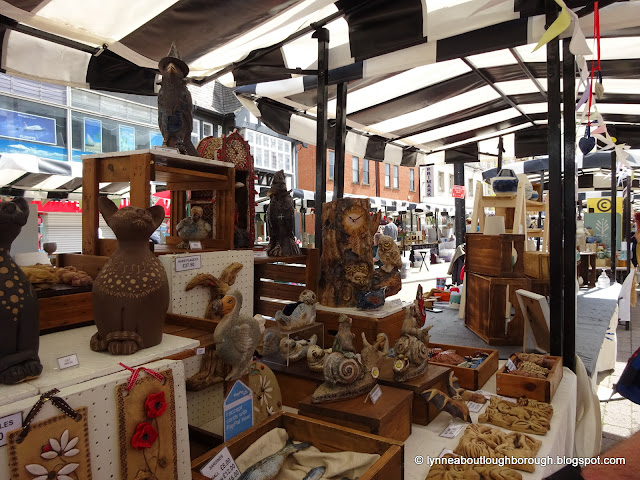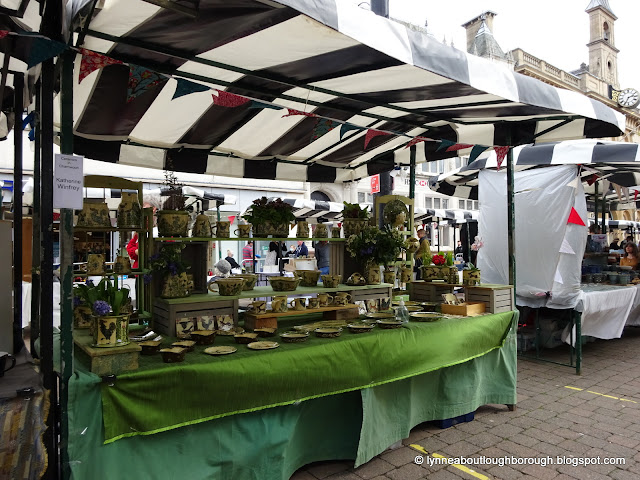The
Festival of Britain, 3 May 1951 – 30 September 1951
So here goes,
and I find myself on an ill-informed journey back to 1951 and the Festival of
Britain, a topic about which I know very little, but something that I’m sure
must have had a big impact on Loughborough, whose population at the time was nearly
35,000, this being more than triple the number of 100 years earlier. Closer
investigation doesn’t quite lead me down the path I was expecting to go, so I
have little information about the involvement in the event of Loughborough
industries, which is what I’d expected to find, rather like the involvement in
the Great Exhibition of 1851. Instead, I’ve discovered a variety of connections
which I’ll outline below and in the following blogpost.
First, what
exactly was the Festival of Britain? (1)
Like the
Great Exhibition in 1851, which had been a celebration of the progress of the nation,
and the new industrial society, the Festival of Britain was again a celebration
on a national scale, and the buildings created especially for the event were a
stunning setting where British scientists, technologists and designers could showcase
their genius and inventiveness.
 |
| Remains of the William Cotton factory on Baxter Gate, 2014 |
The idea for
the Festival began around 1943, as a way of commemorating the centenary of the Great
Exhibition, and like the event it was celebrating, it was several years in the
planning. Of course, it was recognised
that much of London needed to be rebuilt after the Second World War, as did the
people of Britain, following the hardships encountered during the 1940s and
beyond. The Festival also aimed to boost post-war optimism and confidence in all
that was new. Unlike the Great Exhibition, the Festival focused on Britain
itself, and did not involve the Empire.
The Festival was
opened on 3 May 1951, by King George VI, and ran until the end of September. Significant
parts of the Festival were held in the South Bank area where new buildings had
been constructed, including the Royal Festival Hall. Notable things included the
Dome of Discovery and the Skylon, and a 400-seat, state-of-the-art cinema,
showing 3D films on a large screen television.
Alongside the
venues on the South Bank, there was also a Festival Pleasure Park created in
the northern area of the Battersea Park, which included new features like a
water garden with fountains, and a tree-walk. There was also a miniature
railway in the park, and of course, the famous Battersea Fun Fair, the main attraction
of which was the roller coaster, the Big Dipper!
As well as
events in London, arts festivals were held across the country, there were also
travelling exhibitions – the land travelling exhibition which landed at Birmingham,
Leeds, Manchester, and Nottingham - and even a Festival ship, the Campania,
a former Royal Navy escort carrier, which visited various UK ports between 4
May and 6 October. Many, many other events were
held locally in towns and cities across the UK: in Glasgow they held an
Exhibition of Power, which ran for some time, while other places held one-day
pageants.
The festival
was a huge success at the time, and it is reported that over half the UK’s population (more than
25 million of the c50 million people) attended. This compares to the Great
Exhibition attendance figures of over 6 million people which represented about
one-third of the country’s population at the time.
The Arts
at the exhibition
The
exhibition held at the South Bank was also a showcase for artists of the time, and
the new buildings and new housing estates built in the area were a showcase for
contemporary architects. Interestingly, the Royal Festival Hall was designed by
Sir John Leslie Martin, who was a leading advocate of the International Style
of architecture, and it was he who designed the Loughborough Estate at Brixton
in South London.
Art
installations including works by Victor Pasmore and John Piper, and sculptures
by Barbara Hepworth, Henry Moore, and Jacob Epstein. If you are familiar with
the campus of Loughborough University, you may know of the Cedar of Lebanon,
which sits in the square between the EHB (Edward Herbert Building) and what
used to be the library, now the Herbert Manzoni Building. This beautiful tree
hides a series of three sculptures called ‘The Watchers’ which were created by
Lynn Chadwick in the mid-1960s. There are two other sets of companion
sculptures, one in Denmark and the other in the London Borough of Wansdworth.
Lynn Chadwick was one of the sculptors who exhibited at the Festival of Britain.
 |
| The ancient Cedar of Lebanon on the university campus being watched over |
Wilhelm Josef
Soukop, more usually know as Willi, was born in Austria, came to work in
England in 1934. He exhibited his work in 1949 and 1950 at the ‘Sculpture in
the Open Air’ and in 1951 he exhibited ‘Oak Tree’ at the Festival of Britain.
In 1957 Soukop not only created ‘Signs of the Zodiac’ for Guthlaxton Community
College in Wigston, and Martin High School in Anstey, he also created a set
that can still be found today on what is now Charnwood College.
 |
| Soukop's Sagittarius at Charnwood College |
 |
| Soukop's Scorpio at Charnwood College |
Slightly
further away from home, on Oaks Road, Vincent Eley had established a pottery
workshop. He studied at Loughborough School of Art, and created pots in the
style of mediaeval ware, as well as creating the sculptures that sit atop the
Calvary. Some of Father Vincent’s work was exhibited at the Festival of
Britain.
 |
| Mount St Bernard Abbey from the Calvary |
 |
| The Calvary at Mount St Bernard Abbey |
Visitors
to the Festival from our area
Boys from the
Middle and Upper School of the Loughborough Grammar School were taken to visit
the Festival of Britain Exhibition on the South Bank during the Whitsun holidays
by their teacher, Mr D. G. Williams. Another teacher, Mr Trowbridge took other
students later in the term. The Tower, at the centre of the school campus, was
floodlit in celebration of Loughborough Festival Week, and photographed by Mr
George Morgan. And, some of the boys wrote poems related to the Festival of
Britain. H. D. West of class IIIa, penned an amusing 24 lines, a la Wordsworth,
and C. Dyment wrote a script for the BBC for one of the films in a series of
four which featured life in Britain.
 |
| Grammar School tower in 2020 |
By 1945,
William Cottons, the company that had produced the steam-powered knitting
machine, was part of the Bentley Engineering Company, and in 1951 members of
the Bentley Group visited the Festival of Britain, on London’s South Bank.
 |
| Evidence of Cottons on Baxter Gate in 2014 |
A little way
from Loughborough, but slightly closer to London, over in Leicester, staff from
Montfort Knitting Mills, from British Waste, and from George Oliver Shoes all
went along to visit the Festival of Britain.
Sadly, that’s
all I’ve got space for in this post, but do pop back next time for more tales
of Loughborough firms’ activity, and for the events that took place in
Loughborough itself.
Notes
(1) There's reams and reams of information out there on the internet about the Festival of Britain, so what I am presenting is a very, very potted story of the event. If you want more detail, you could do worse than start with searching Wikipedia!
Posted by lynneaboutloughborough 9 May 2021
You are welcome to quote passages from any of my posts, with appropriate credit. The correct citation for this looks as follow:
Take down policy:
I post no pictures that are not my own, unless I have express permission so to do. All text is my own, and not copied from any other information sources, printed or electronic, unless identified and credited as such. If you find I have posted something in contravention of these statements, or if there are photographs of you which you would prefer not to be here, please contact me at the address listed on the About Me page, and I will remove these.
You can leave comments below, but do check back as my reply will appear here, below your comment.
Thank you for reading this blog.
Lynne
























































